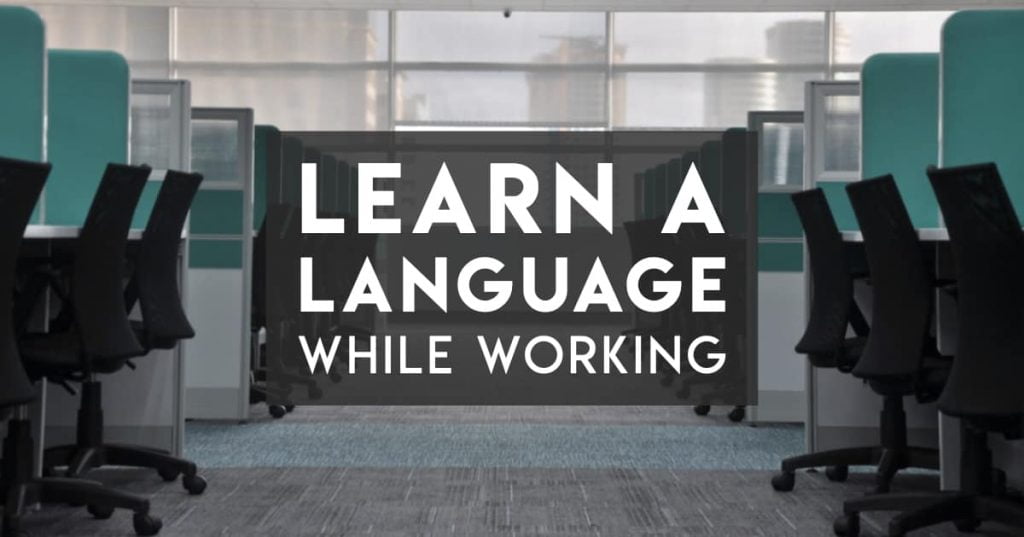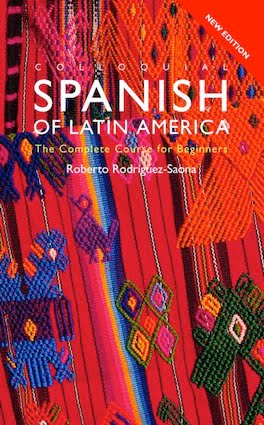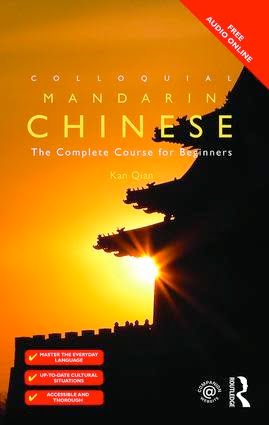How to Learn a Language While Working Full-Time
This post may contain affiliate links. Please see our disclosure policy for details.
While it’s nice to take time off and study, most of us don’t have the luxury. Whether you’re in your home country or want to learn the language while being a digital nomad, it’s hard to find the time to learn effectively while working. How do you do it?
We’ve learned a few languages, and we have a definitive viewpoint on how to learn languages efficiently and in a small amount of time. We also know how to do it effectively around a busy schedule — which we often do as well.
I thought I’d share some of these tips on how to learn a language while working full time in case it was helpful to others.

Who this guide is for…
- People with full time jobs or family obligations who want to learn a language on the side
- Digital nomads who want to learn the language of the country they’re living in (Spanish, Thai, French, and Chinese being the most common)
- Anyone who only has 1-1.5 spare hours a day and wants to learn a language as efficiently as possible… is this you?
The following is a step-by-step recipe to learning a language on the side. Do this, and in a couple of months you’ll be conversational in Spanish, French, or German. (And maybe in six months for Arabic, Russian, or Chinese.)
Trust me. We’ve done it!
Essential Language Learning Resources
DESCRIPTION | Game-changing language tutoring platform | Free powerful flashcard app for memorizing hundreds of vocab words | App aimed at developing listening and speaking skills | Routeledge Colloquial self-study books. Available as an eBook or physical book, and all the audio is online. |
PRIORITY LEVEL | Mandatory | Mandatory | Strongly Recommended | Strongly Recommended |
LEARN MORE |
Contents
Overview of how to learn a language while working full time
The three most important things are:
- Using a simple instructional book for the basics
- Practise speaking with a tutor
- Keeping notes of what you learned in flashcards, and studying with them
Just as those things are important, the following things are not important, and give the illusion of progress/maintenance, but actually just take away your time:
- Don’t use any apps (Duolingo and so on) for anything more than the alphabet
- Don’t listen to podcasts about a language (they’re fun, but not a good use of time)
- Don’t watch television in your target language (this is fine, but only when you’re above intermediate)
Seriously. Don’t use apps. And don’t do things that feel like study, but which aren’t study.
OK, now for what to do…
Get a “Colloquial” language book… and only read half of it
Time commitment: 1 hour/day, about 2 weeks.

Objective: Learn the basics of the language. Alphabet, pronunciation, how to make sentences, conjugate verbs, use adjectives, and get by in basic situations. If you can already do all this, go to the next section!
We always recommend using a “Colloquial” textbook to learn the basics of a language. You need the basics to get started with a tutor (usually a book can explain it better than most tutors), and it only takes less than 10 hours collectively to get enough knowledge.
These books are affordable, available in electronic or physical format, and the audio is online (you can stream it or download it) — perfect for digital nomads who want to travel light!
You don’t even have to finish the book. In fact, you usually only have to do about half of it. As soon as you know the basics, start speaking with a tutor.
The first half of most language books teaches the alphabet, pronunciation, sentence structure, how to conjugate verbs, how adjectives work (plurals and grammatical gender), and how to talk about a range of basic things like who you are, what you’re doing and so on.
As you go through, add every new word or phrase to your flashcards (see the next section). And start learning!
The second half will go into more complicated things like conditional structures (“If I had money, I’d buy a new house”) and how to understand things like the news. This is fine and you should keep it as a reference, and maybe go through it more slowly.
But the second half gets boring. It introduces concepts maybe not interesting to you. So you should consider the content optional, but the grammar important.
Get Anki, set up your first flashcard deck, and begin reviewing
Time commitment: ~30 minutes/day (initial 1 hour set-up/poking around)

Objective: Actively memorise every single word or phrase you encounter (that’s important).
It’s easy to learn a language while working if you have a study routine — like going through your Anki flashcard deck every day.
The best way to learn is through “spaced repetition training” (SRS); the best way to do SRS is with flashcards; and the best way to do flashcards is with Anki.
So, first, set up Anki on your computer. It’s also a good time to get the app for your phone and set up the syncing. Create your first deck — just one, e.g. “Spanish”. That’s where all your words are going to go.
Make sure you read our pro tips for using Anki for language learning. For example, don’t just add words — add examples with every word, so you know how to use the word. It’s amazing how often I see people say things like “I know 2,000 words but I don’t feel fluent”.
The most important things about flashcards are
- Be complete: Add every word or phrase you want to learn
- Learn, don’t memorize: Add words with context, showing how you use them in a sentence. If you don’t know, find out (or don’t add the word).
- Don’t add too many: Add about 20 words a day to begin with. After a few weeks reduce this to 15 or 10 a day.
- Be consistent: Study every day. Don’t let words pile up.
Read the guide. You won’t regret using Anki properly: with flashcards, you really learn.
Use Speechling or Glossika to start feeding you sentences
Both Speechling and Glossika are great ways to learn a language pronounced by a native speaker.
The underlying goals of each app is the same — teach you sentences, rather than words. But the way they go about it is a bit different.
Speechling has 11 languages in it, and is actually totally free, including 35 sentences a month reviewed by a human for pronunciation or grammar mistakes. It has great apps and works really well on your phone.
Glossika has over 60 languages, including variants on major languages, and some languages that are on the verge of extinction. It costs $25-30 a month (depending on whether you subscribe monthly or yearly)
Try Glossika for a Week for Free
Try Glossika’s method of teaching language through thousands of sample sentences. Learn languages by sentences spoken by native speakers in over 60 languages.
Important: No matter which you use, don’t add too many sentences a day! Learn only on average a couple a day. It gets REALLY overwhelming.
Get online tutors from italki and start speaking
Time commitment: 30 mins/day, about 2 weeks after starting

Objective: Speak, and learn through speaking
As soon as you know the basics of a language, and can make sentences like “I want to study” or “I am tired”, it’s time to start speaking.
Don’t delay this!
And we always recommend getting tutors on italki. You can do language exchanges, which are free, but you have to find the right person, schedule time, be consistent with them (they might not be available). And in the end, you might not learn much.
Get $5 in italki credits — enough for a trial class!
Get a tutor online for as little as $4/lesson from italki with $5 in credits after your first purchase of $20 of credits.
We just like it how on italki we can pay someone $5 for 30 minutes of conversation in which they explain everything, and we schedule a time and they just show up on Skype. It’s reliable, fuss-free and makes sure we spend time learning, not scheduling.
Here’s how to get the most out of italki. (We wrote a longer article on this here.)
- Create your account if you don’t have one.
- Find four teachers you like the look of in your target language. Just watch their videos. The best teachers are the ones with the most reviews, generally (not just the highest). Pick a diversity of teachers: young and old, male and female.
- Schedule lessons or intro lessons. Thirty minutes is fine, you’re busy! You have to schedule 24h in advance, so schedule them out for the next four days. (Or if it’s a weekend, you can do them all, just to know you want to continue with them.)
- Have your lessons, and take notes.
- Schedule out 1-2 weeks of lessons right away. Don’t get caught by that 24h minimum.
To start with, you’ll just speak the basics of the language with each person. Of course you won’t speak 100% in the language… that takes time (months sometimes). Actually, when you get to that level, you might need to switch tutors — your old ones will be too used to speaking to you in English.
You will also have the same conversation over and over again. But that’s fine. Actually it’s better. In real life, we do the same thing. Think how many times you’ve introduced yourself, said what you do for a living, explained where you live… this is just the stuff of life.















A question I’ve often wondered, but never really found an answer to: when you’ve been learning a language for a while and want to “switch” to another, how do you “park” the first language so you a) don’t forget it, and b) can pick it up again?
Hi Thomas, I’m sure there are many ways to do this, none of them perfect, and so the top-line answer is you’ll have to experiment and find out for yourself. My current method is to actively learn just one language, and to maintain the others. To maintain the others, I use audio flashcard decks in Anki. Even if I just do 20 cards a day, it keeps that language active in my brain. I have only tested this spuriously and my result has been that occasionally when I’ve had to switch to another language (like when ordering Chinese food a… Read more »
Thanks for the reply, I’ll give that a shot!